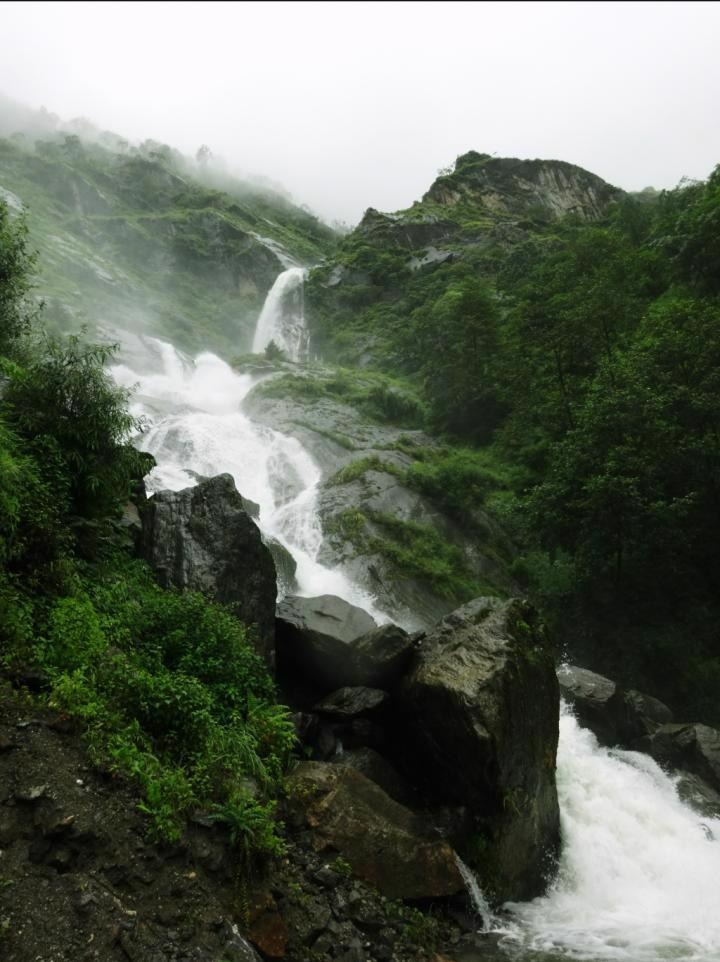May 20 2021
Water in high-mountain areas has a number of features. Frozen in the ground, water is similar to a cement foundation that maintains the stability of slopes.
 The catchment area of Bhote Koshi River lies in the bordering region between Nepal and China. Image Credit: Luc Illien/GFZ.
The catchment area of Bhote Koshi River lies in the bordering region between Nepal and China. Image Credit: Luc Illien/GFZ.
During the melt season, snow and glacial ice sustain the rivers and, thus, the foothills with water for agriculture and drinking purposes. On the other hand, heavy rainfalls with landslides and flash floods pose a serious hazard to the valley residents. Therefore, the subsoil with its potential to preserve water plays an empirical role in mountainous areas.
But how can you precisely determine the extent of fullness or emptiness of the soil reservoir in difficult-to-access regions?
Scientists from the German Research Centre for Geosciences (GFZ), along with collaborators from Nepal, have now revealed a sophisticated technique to monitor the dynamics of groundwater in high-mountain regions. The team uses seismic waves, like those produced by ground vibrations, and subsequently records them with the help of highly sensitive instruments.
The researchers exploited the fact that the seismic waves, similar to medical ultrasound, propagate in a different way in different conditions of subsurfaces. The team, headed by Luc Illien, Christoph Sens-Schönfelder, and Christoff Andermann from GFZ, has reported their findings in the AGU Advances journal.
Seismic waves have become popular from earthquakes. After rupturing the subsurface, these waves propagate quickly and release destructive forces. But relatively smaller waves are also caused, for instance, by streetcars, trucks, or—in the mountain regions—by falling rocks. The ground is, in fact, vibrating constantly. This is known as “seismic noise” in the field of geoscience.
What must be arduously extracted from the quantified data of seismometers used in earthquake detection has become a useful data source when investigating the subsurface. The reason for this is seismic waves travel in a different way in the water-saturated zone when compared to the unsaturated one, also known as the vadose zone.
Along with his collaborators, Luc Illien, a PhD student from GFZ, used a couple of Nepalese seismic stations at 1,200 and 2,300 m above sea level.
The Nepalese Himalayas provide vital water resources to a large part of the population of South Asia. Most of this water drains through mountain groundwater reservoirs that we can poorly delineate.
Luc Illien, Study First Author and PhD Student, GFZ
The location of the study included the catchment area of a tiny tributary to the Bothe Koshi—a border river between Nepal and China. With the help of many level gauges and weather stations, the researchers obtained data, at times each minute, across three seasons of monsoon.
Based on this, the researchers determined a groundwater model that could be compared with the seismic records. The result was that the runoff to the Bothe Koshi river is mainly fed from the deep aquifer. During dry seasons, only a small amount of water flows down the valley, and during monsoon seasons, the levels increase; however, two distinct phases can still be detected.
Initially, it rains without raising the level of discharge, and later a distinct association between river level and rainfall becomes evident.
The first rainfall initially replenishes reservoirs in the soil near the surface. Once the soil is saturated with water, the deep groundwater reservoir, which is directly linked to the rivers, fills up. An increase in groundwater is then immediately reflected in rising river water levels.
Christoff Andermann, Study Co-Author, GFZ
The comparison with the seismometer data demonstrated that the saturation of the vadose zone can be clearly inferred from the seismic noise.
“Only by merging the hydrological observations with the seismic measurements we could analyze the function of the vadose zone as a link between precipitation and groundwater reservoir,” stated Christoph Sens-Schönfelder.
Understanding how the reservoir fills and drains is crucial for assessing its sustainability. From this, we can not only make predictions for runoff, but also warn of increased risk of landslides and flash floods.
Luc Illien, Study First Author and PhD Student, GFZ
For instance, if the soil is already soaked with water, rainfall tends to run off more superficially and can wash away slopes. Added to this, climate change is worsening this situation by destabilizing the mountain environment and contributing to variations in large-scale weather patterns.
According to Niels Hovius, GFZ Scientific Director who contributed to the analysis, “Our work in Nepal and its results show how important it is to monitor numerous influencing factors. These include groundwater storage, changes in land use, land cover and precipitation regimes.”
“Capturing and anticipating such changes will help us better predict the future of freshwater resources and mountain landscapes, especially as glaciers continue to melt,” concluded Hovius.
Journal Reference:
Illien, L., et al. (2021) Subsurface Moisture Regulates Himalayan Groundwater Storage and Discharge. AGU Advances. doi.org/10.1029/2021AV000398.